Wired Connection Klipper Configuration
- The STM32F072 needs to be flashed with firmware before connecting to Klipper; otherwise, wired connection operations are not supported.
Start Compilation
- A host computer with the
klipperservice installed Connect via SSH over network - And the device should be properly connected to the host computer
- Note: Please use a standard host computer, such as Raspberry Pi, FLY board, etc. If it is a modified host computer (e.g., WiFi dongle, Redmi devices), we cannot provide technical support due to numerous issues with such hosts
- Firmware Compilation Guide for Standard Host
- FAST System Firmware Compilation Guide
- Applies to standard host computers running systems like Raspberry Pi, FLY board, etc.
- Do not use the
ROOTuser for any operations on such hosts - Please perform operations using a regular user account
- To switch users, for the
FlyOS-Armbiansystem, please use the commandsu flyto switch to the regular user - For other systems, use the command
su <your host username>to switch to the regular user
su <your host username>
- Notes for the
FlyOS-FASTsystem- The default username for the
FAST systemisroot, and the password ismellow - Firmware compilation must be performed using the
rootuser - The
FAST systemonly has theROOTuser—you do not need to switch users!!!
- The default username for the
::: tip
- Please ensure that the host machine can connect to the network normally.
- Before compiling the firmware, use SSH to log in to the host machine via the network.
- Do not use a serial port tool to log in to the host machine.
:::
Klipper Firmware Compilation and Configuration Page Operation Instructions
::: tip
Please make sure that the keyboard input method is in half-width mode, i.e., English mode.
:::
- The key
↑(up arrow) and↓(down arrow) on the keyboard are used to move the cursor up and down to select menu items. - The confirm key
Enteror spacebarSpaceis used to check the menu or enter a sub-menu. - The exit key
ESCis used to return to the previous menu. - The
Qkey is used to exit the Klipper firmware configuration page. - When exiting the Klipper firmware configuration page and there is a prompt, press the
Ykey to save the configuration file.
::: warning
If there are fewer options in the configuration page, please first check [ ] Enable extra low-level configuration options to display some hidden options.
:::
Below is an introduction on how to compile the firmware:
-
After connecting via SSH, enter the following command and press Enter:
cd ~/klipper && rm -rf ~/klipper/.config && rm -rf ~/klipper/out && make menuconfig -
Among these,
rm -rf ~/klipper/.config && rm -rf ~/klipper/outdeletes previous compilation data and firmware. -
make menuconfigis for compiling the firmware. After execution, the following interface should appear: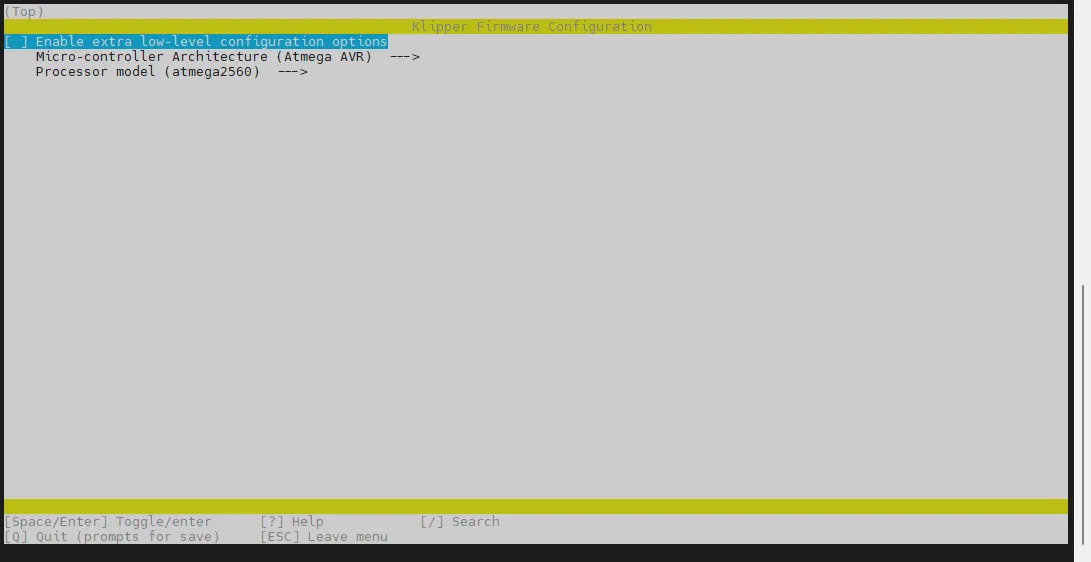
-
Select Enable extra low-level configuration options and press Enter:
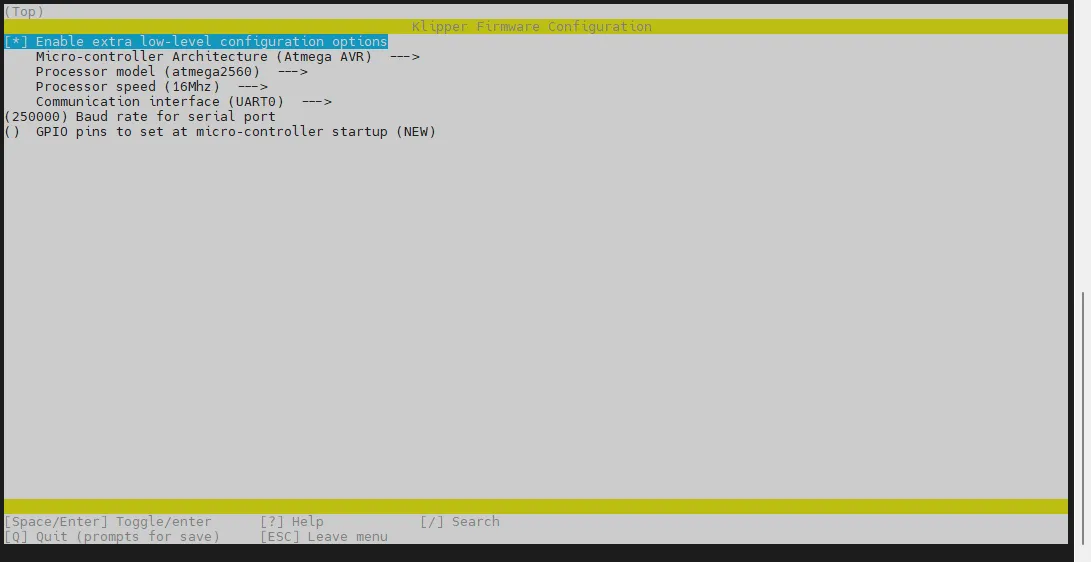
-
Enter the menu Micro-controller Architecture, then select STMicroelectronics STM32 and press Enter:
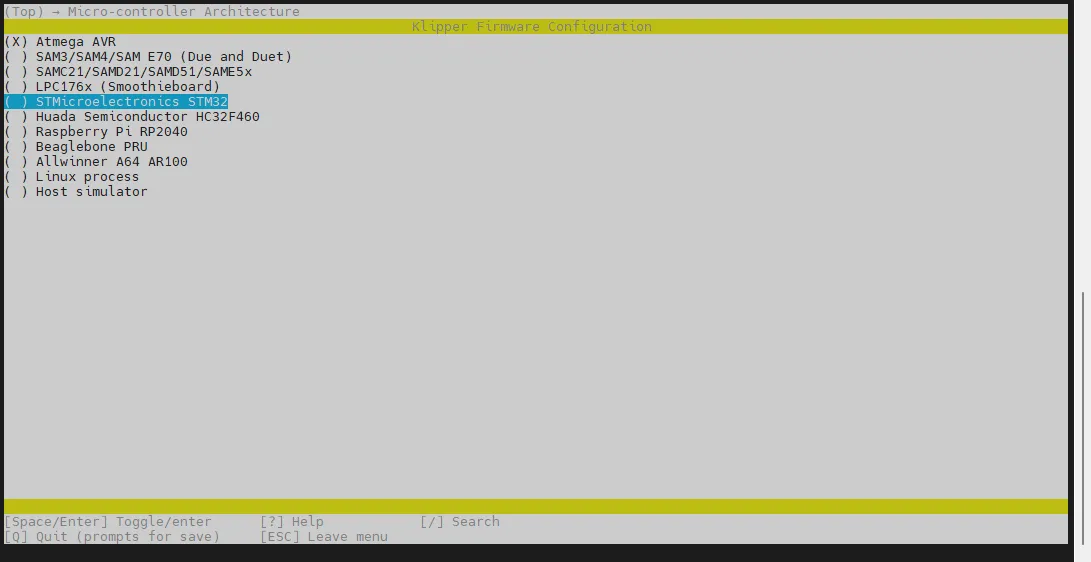
-
Enter the menu Processor model, select STM32F072, and press Enter:
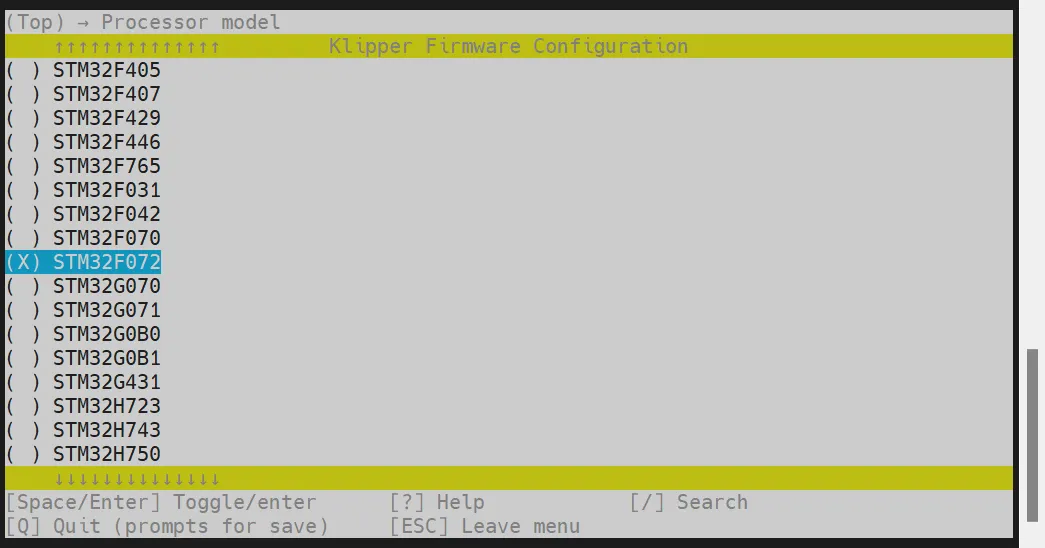
-
Select Bootloader offset, choose: (No bootloader):
-
Communication interface, select: USB (on PA11/PA12):
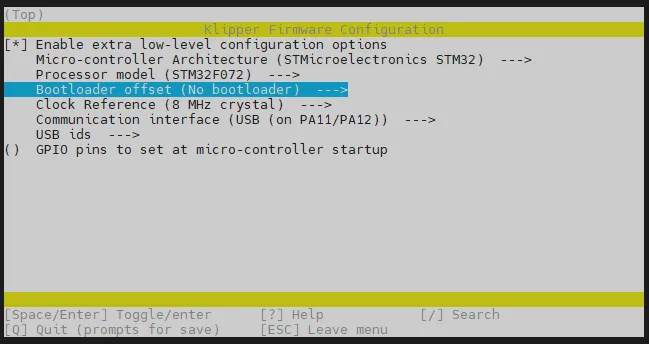
- Press the
Qkey. When Save configuration appears, press theYkey. - The configuration should now be saved, and you should have exited to the command line interface.
- Enter
make -j4to start compilation. This will take some time.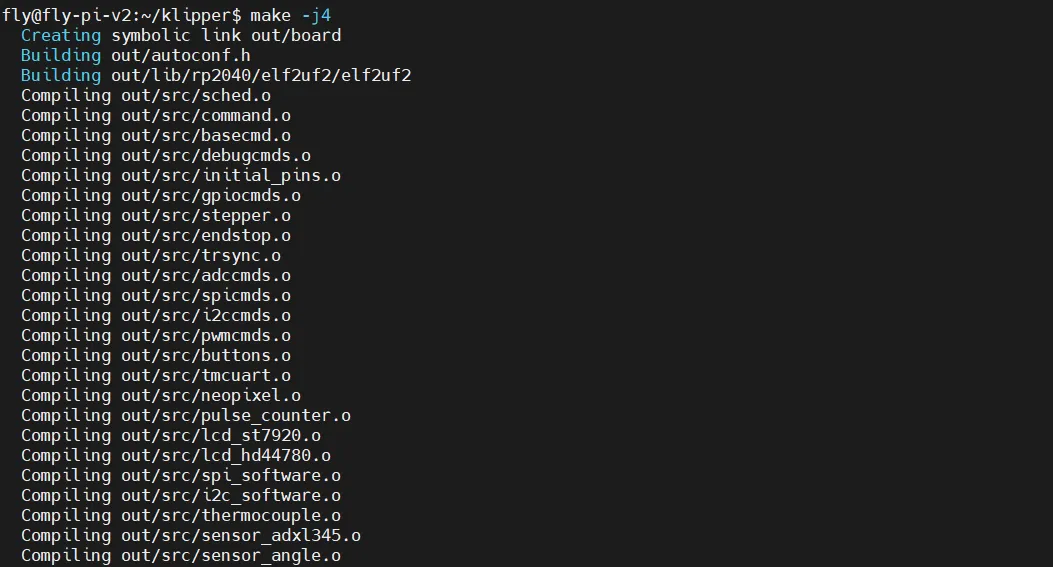
- If the following content is output at the end, the compilation is successful.
- Due to Klipper version differences, as long as
out/klipper.binappears, it indicates success.Linking out/klipper.elf
Creating bin file out/klipper.bin
Enter Programming Mode
- With the AirClick powered off, hold the BOOT button on the STM32 and connect the STM32's programming port to the host computer via Type-C.

Verify Entry into Programming Mode
-
Make sure the host computer can connect to the internet normally
-
Make sure the data cable connecting the lower machine to the host computer has data transmission function
-
After SSH connects to the host computer, enter
lsusband press Enter. The following three situations may appear- Displays the USB devices that have been identified
- Prompts that there is no
lscommand, you can execute this command to installsudo apt-get install usbutils - No error message, no other information (system issue requires changing the system)
-
After entering
lsusb, there is no response. This is a system issue, and we cannot do anything about it. You need to replace it with a confirmed normal system -
If the information circled in the picture below appears, you can proceed to the next step

-
0843:df11belongs to the device you need to use this time. The following prompts you don't need to care about, because system issues may cause it to display incompletely or not display at all -
If not, please check by yourself whether the data cable is connected properly or whether the motherboard has entered DFU
Proceed to the next step only when there is 0483:df11
Flash the Firmware
- Install the burning tool
- No need to execute the installation of the burning tool for the FLY upper computer
- If you need to install, please note: The upper computer needs to be able to access the internet to install normally
- If already installed, no need to install
sudo apt update
sudo apt install dfu-util -y
- Execute the following command to check if the connection is successful.
lsusb
-
If there is no DFU device, please try to re-enter burning mode
-
Due to system version issues, it may display other names. If
0483:df11is shown, it indicates entering burning mode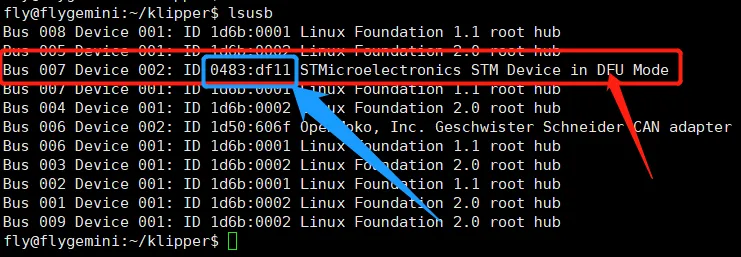
- Burn the firmware
- Execute the code below to start burning
sudo dfu-util -a 0 -d 0483:df11 --dfuse-address 0x08000000 -D ~/klipper/out/klipper.bin
- If the content shown at the arrow in the following image is
File downloaded successfully, then the burning is successful
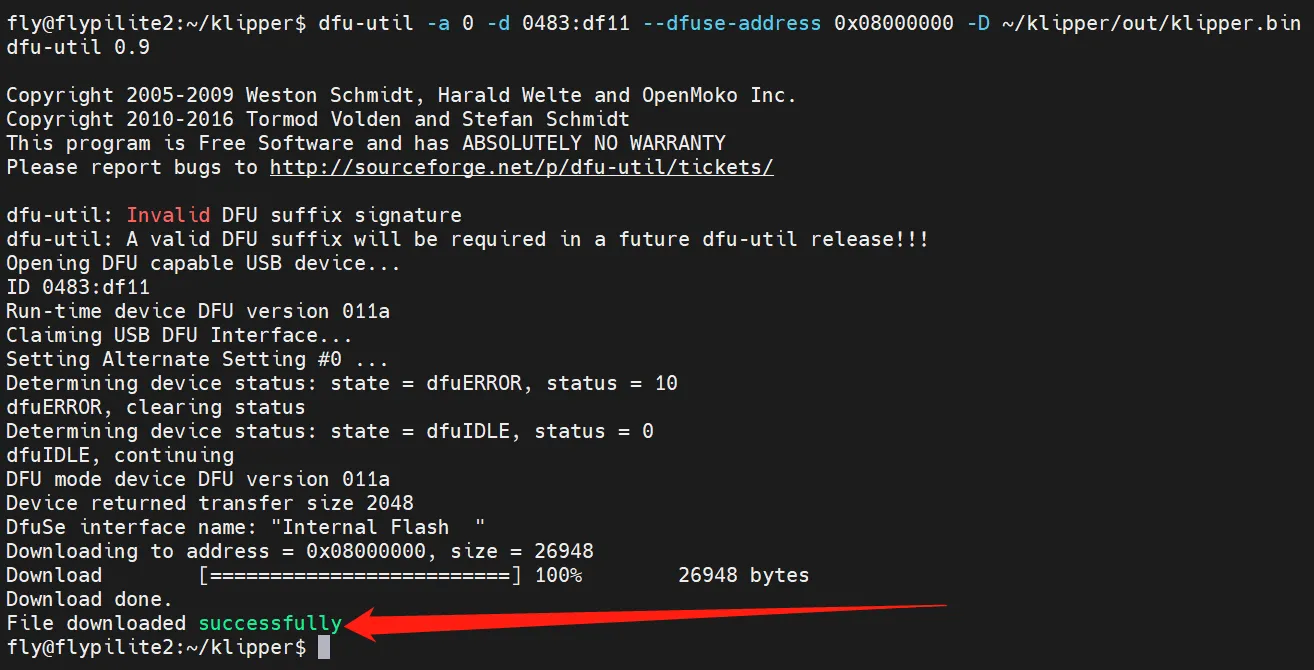
After burning, the main board needs to be completely powered off once.
Search for USB ID
- Connect the AirClick's programming port to the host computer's USB port. Do not hold the BOOT button, otherwise the ID cannot be searched.
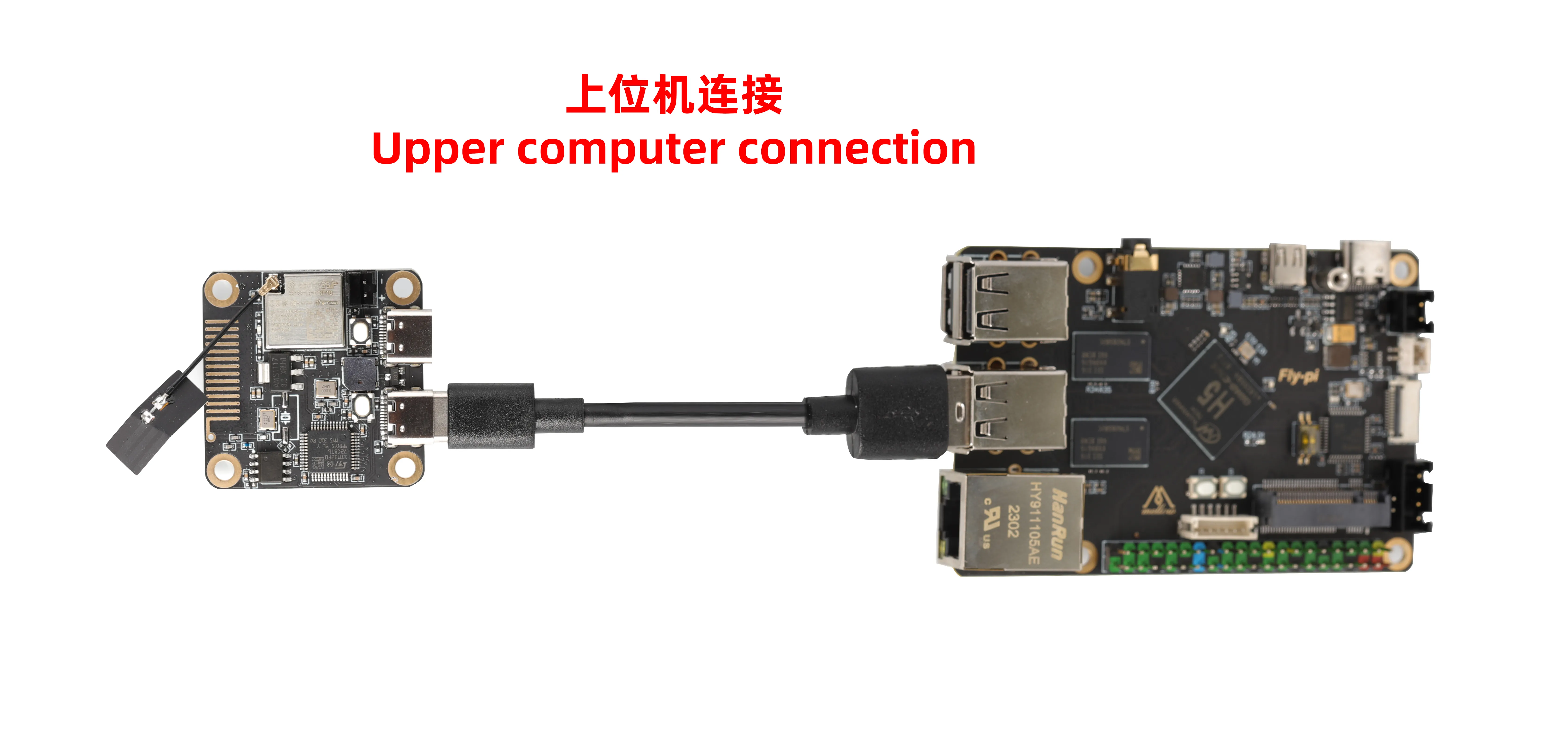
Notes
- Ensure the tool board has been flashed with
USBfirmware before performing any operations; - This tutorial is only applicable for searching the tool board ID, not for searching the main board ID;
- Please perform subsequent operations only after the host computer is properly connected to the tool board;
Connect to SSH
- Please first log in to
SSHvia the network - Please ensure that you are logging in to
SSHvia the network, not via serial port
Search for Device
- Please ensure the host computer is connected to the Internet and that the data cable connecting the device to the host computer supports data transfer.
- After SSH connecting to the host computer, enter
lsusband press Enter. If you see the information circled in the image below, you can proceed to the next step.- If no information is displayed, this indicates a system issue with the host computer. We cannot assist with this, and you will need to replace the system with a confirmed working one or change the host computer.
- If the
lsusbcommand is not found, install it by running the following command:sudo apt-get install usbutils
1d50:614eis the device you will use in this process.- Some host computers may fail to fully display or not display the information due to system issues.
- If the device is shown after running the
lsusbcommand but1d50:614eis missing, try using a different data cable or connect the main board to another USB port on the host computer.
You must proceed to the next step only after one of the 1d50:614e devices is found.
Search for USB ID
ls /dev/serial/by-id/*
- Enter the command below and press Enter. If everything works properly, a blue ID like the one below will appear. (The example below is just for reference)
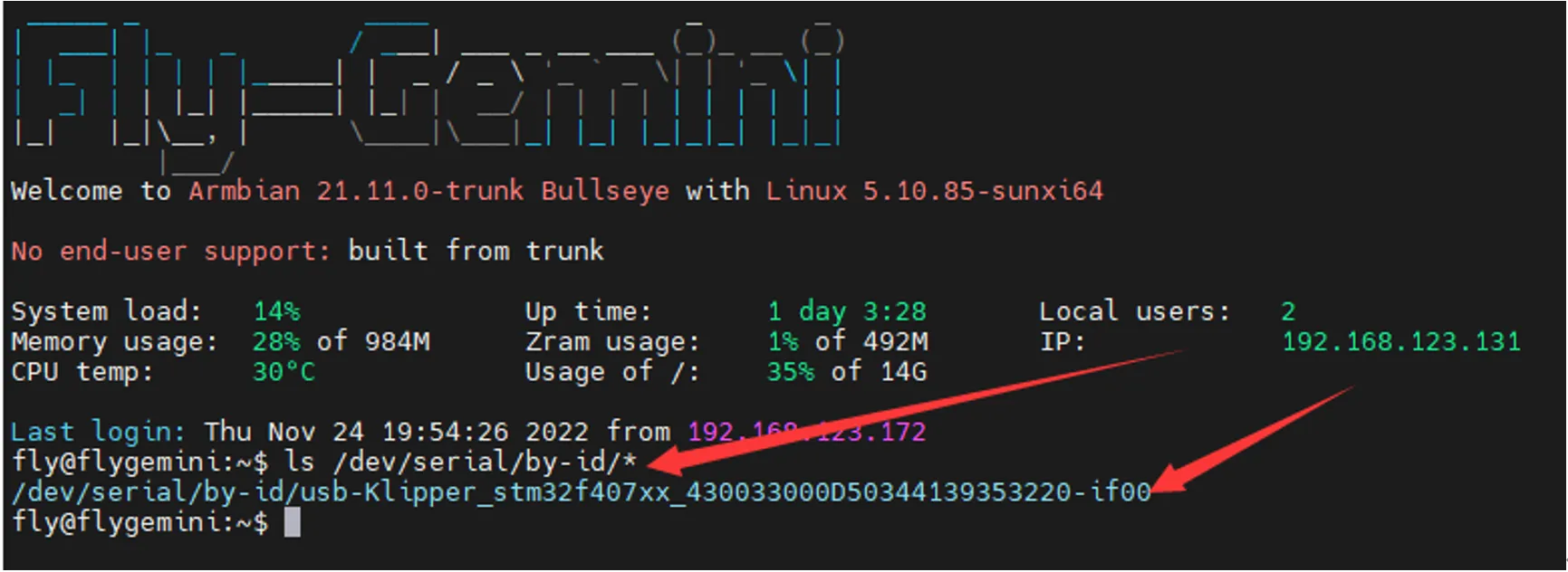
- If no ID appears after entering the command, but the device appears with
lsusb, please change the host computer or its operating system
If multiple IDs appear, please choose the corresponding ID based on your main board's MCU model.
Insert the USB ID into the configuration
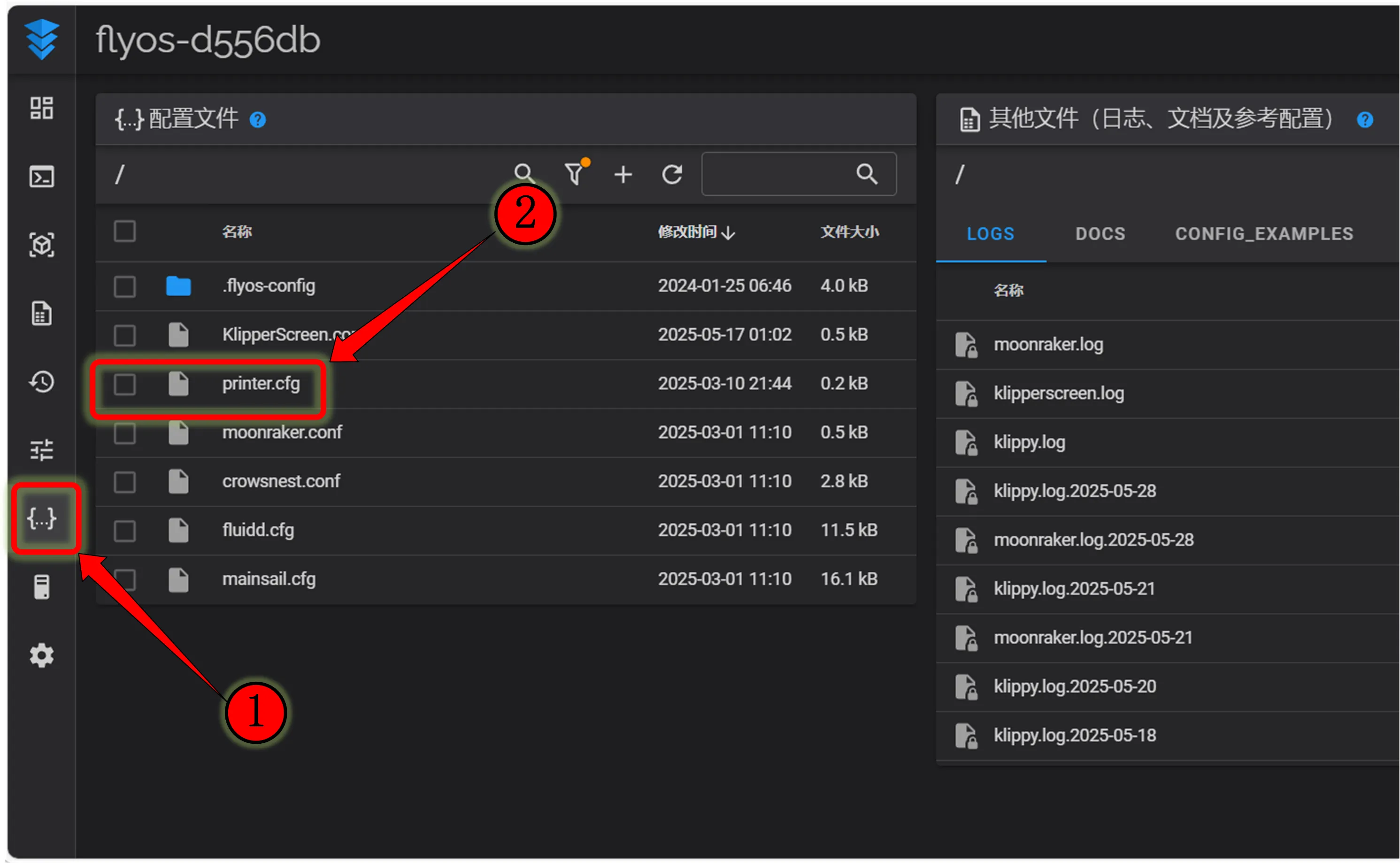 |
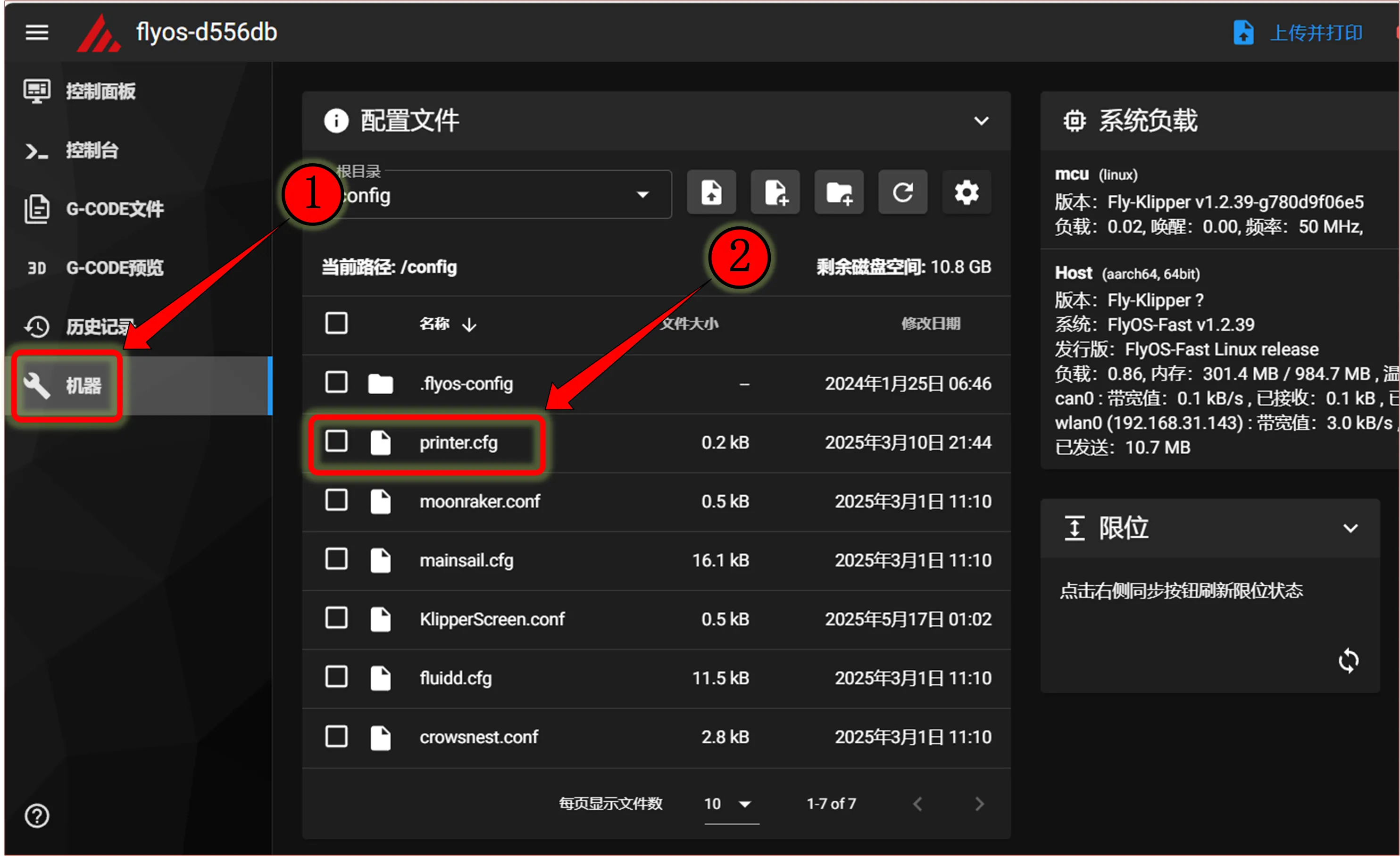 |
Note: All IDs appearing in this document are examples. Each main board's ID is different in practice. Please modify and enter according to the actual ID you obtained.
Enter the Tool Board USB ID
-
Below is a sample configuration
Note- The
toolboardin the configuration below refers to the tool board name; please replace it with the appropriate name if it is different
dangerous[mcu toolboard]
serial: <Replace this with the ID you just looked up>- To add the
IDof the tool board, it must be[mcu toolboard]followed byserial:and then the ID of the tool board you searched for
- Below is a sample configuration
- Please note that this tutorial is specifically for searching and configuring the tool board ID; normally, it should already be connected to the main board
- And the main board must be
[mcu], while the tool board is[mcu toolboard]
- Fluidd reference
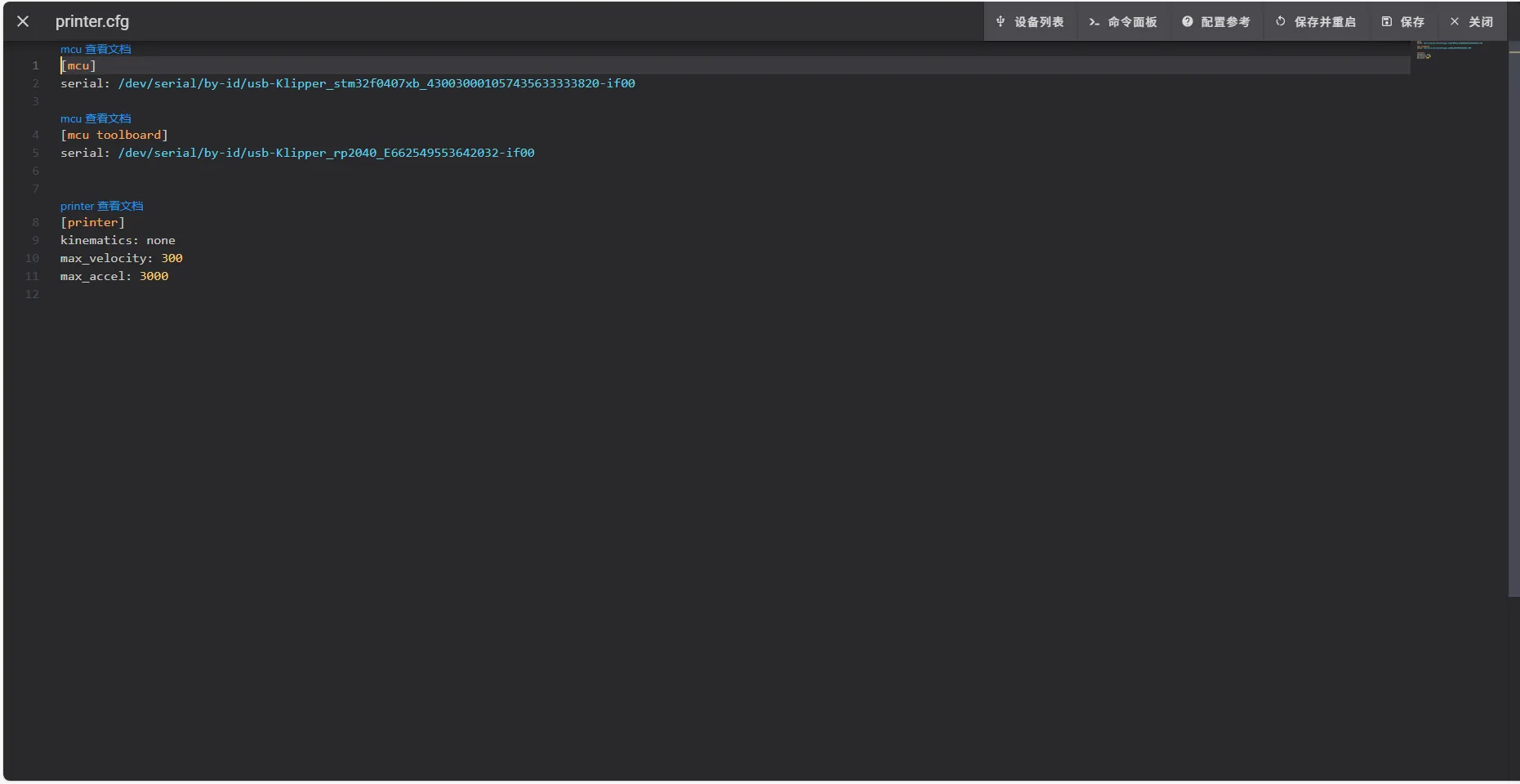
- Mainsail reference
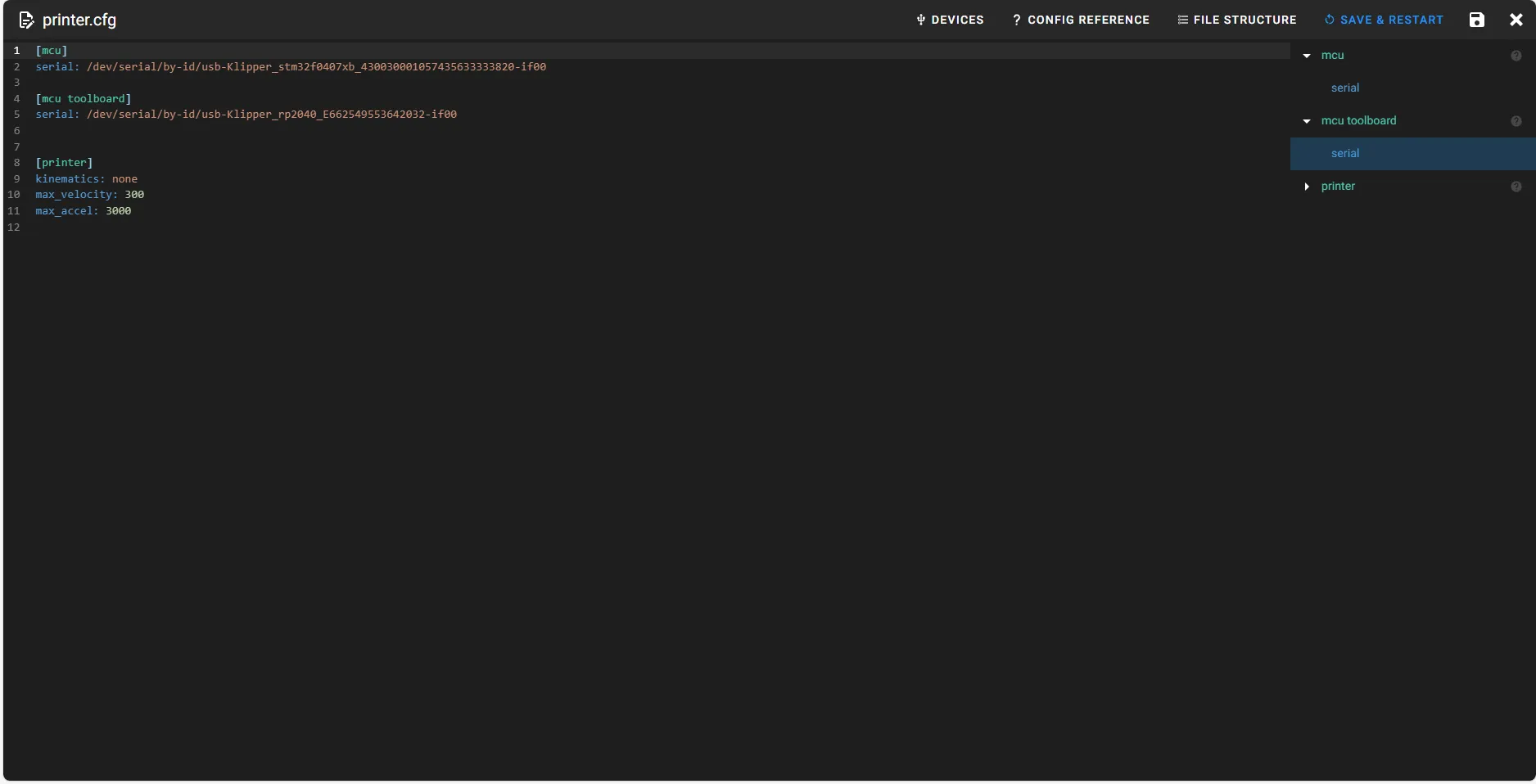
- Click
SAVE & RESTARTat the top right corner, which will automatically save and restart klipper
- The